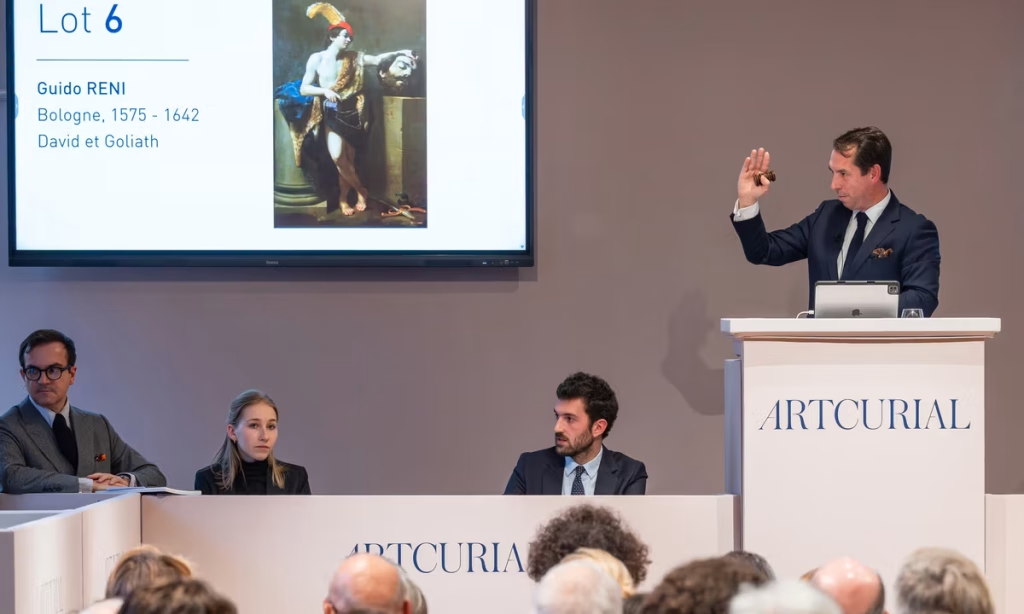Guido Reni is on a role. Once a leading artistic figure of early 17th century Rome, when his patrons included the influential Borghese family, the Bolognese artist (1575-1642) was later scorned by the modernist-minded, who dismissed his upward-gazing Madonnas as close to kitsch.
But 21st-century scholars have displayed renewed interest in his subtlety and skill, leading to major museum exhibitions. And now he has set a world record at auction.
On Monday afternoon (24 November) in Paris, Artcurial sold Reni’s early-17th-century, oil-on-canvas work, David and Goliath, for €12.39m (including fees), breaking the artist’s previous auction record by a considerable sum. The work’s pre-sale estimate was just €2m–€4m and its buyer, according to the auction house, was a private European collector.
Reni’s previous record at auction dates back to a Sotheby’s London sale in 2008, when The Martyrdom of Saint Apollonia, an oil-on-copper painting, sold for £1.8m. The same work then sold for a mere $819,000 at a 2022 auction at Christie’s New York.
Left: Articural’s recording-setting David and Goliath. Right: the version of the painting held by the Musée des Beaux-Arts d’Orléans
©Artcurial. © Musées d’Orléans
Reni’s David and Goliath has been the subject of debate in recent years. There are some six versions of the work, varying in composition, execution and attribution.
“Reni loved the pleasure of variation,” says Corentin Dury, the curator for the Old Masters collection at the Musée des Beaux-Arts d’Orléans, which owns what is now regarded by many as the earliest autographed version of the painting. Until recently, a version held in the collection of the Louvre was considered “more important,” Dury says, but analysis and comparisons with a drawing in a UK collection has led to a change of opinion. According to Drury, the record-setter was already known about, but was thought of as “just a later copy”.
However, Eric Turquin of the France-based Old Masters appraisers Cabinet Eric Turquin—which helped bring the work to auction—disagrees with Dury. He argues that his firm investigated a lead on the work earlier this year, when it was hanging in a castle in western France, and was therefore responsible for “the discovery” of the painting.
Turquin also disagrees with Dury’s opinion regarding the importance of the Orléans museum’s version, in which David is seen staring directly into the giant head of the vanquished Goliath. The Louvre’s version, and the version sold yesterday by Artcurial meanwhile, are quite similar, and show Goliath’s head turned the other way around.
Turquin, who attended Monday’s auction, believes that the Louvre and Artcurial versions “were probably created together”. He has no doubts about the significance of the recording-breaking work—which “explains the price”, he says.
